Berries come in an impressive range of shades — from vibrant reds and deep purples to inky blacks, soft whites, and even warm oranges. Their colors come from natural plant pigments such as flavonoids and carotenoids, with anthocyanins creating those striking red, purple, and blue hues. Among all these, blue berries hold a special place for me, not just for their beauty, but also for their remarkable health benefits. In fact, they often boast the highest levels of anthocyanins and antioxidants of any berry. While blueberries and bilberries are well-known when it comes to berries that are blue in color, they’re just a glimpse into the rich spectrum of berries that share their striking blue hue. To show you just how diverse they are, here’s a list of 32 blue berries you might spot in your backyard, at the farmers’ market, or on the grocery store shelf.
1. Blueberry
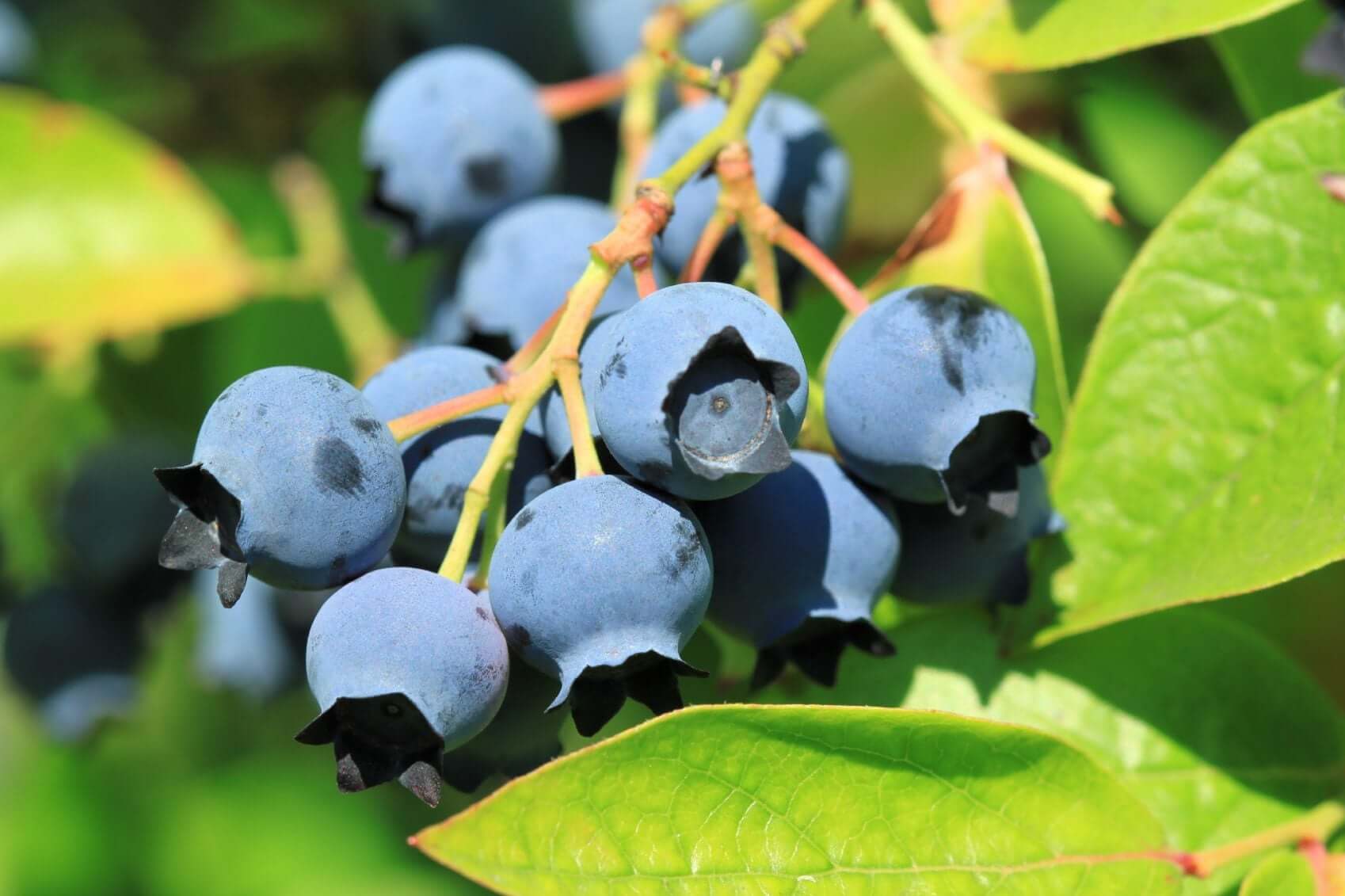
Small, round, and deep blue, blueberries are a sweet favorite found fresh, frozen, or baked into treats. Packed with antioxidants, vitamin C, and fiber, they’re as nourishing as they are tasty. A handful of these jewel-like berries can brighten breakfasts, desserts, and even salads.
2. Bilberry
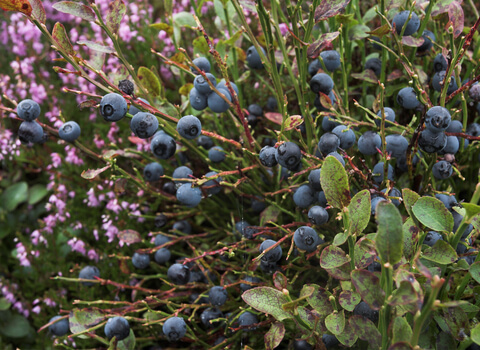
Similar in appearance to blueberries but darker in flesh, bilberries have a rich, deep blue skin and a tangy-sweet flavor. Long valued in traditional remedies, they’re thought to support blood circulation and eye health. Popular in pies and jams, these berries bring both color and flavor to the table.
3. Blue Elderberry
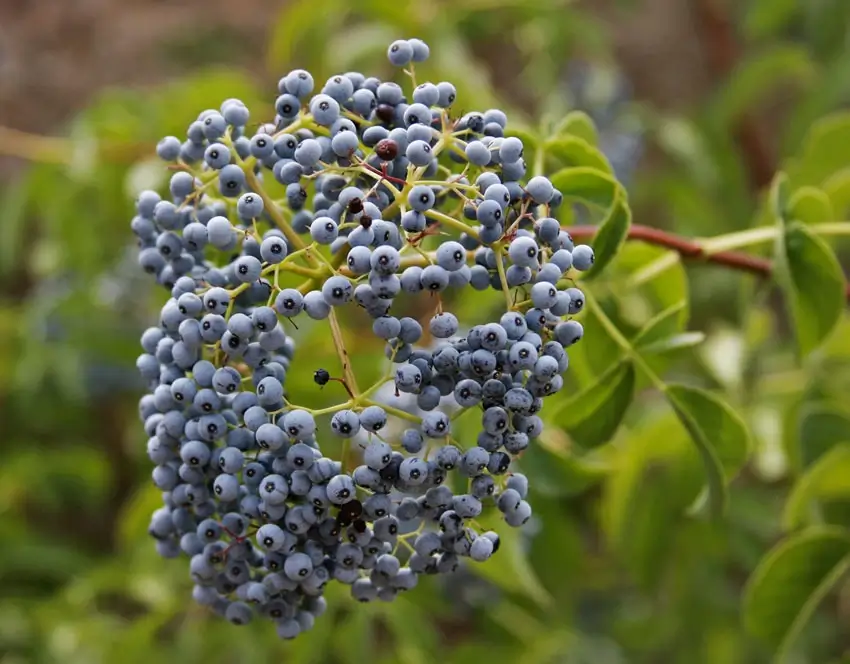
Blue elderberry trees grow bunches of soft, powdery blue berries. They’re rich in vitamins A and C and are usually cooked into jams, pies, and syrups. Raw berries taste bitter, but cooking makes them sweet, fragrant, and good for boosting health.
4. Honeyberry
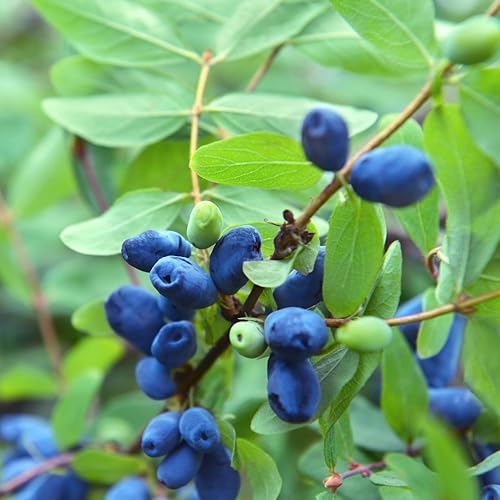
Shaped like tiny blue capsules, honeyberries are early-ripening fruits with a sweet-tart taste reminiscent of blueberries. They grow on tough shrubs, do well in cool weather, and taste great in jams, jellies, or when eaten fresh from the bush. Their rich blue skin hides a soft, juicy interior full of antioxidants.
5. Damsons
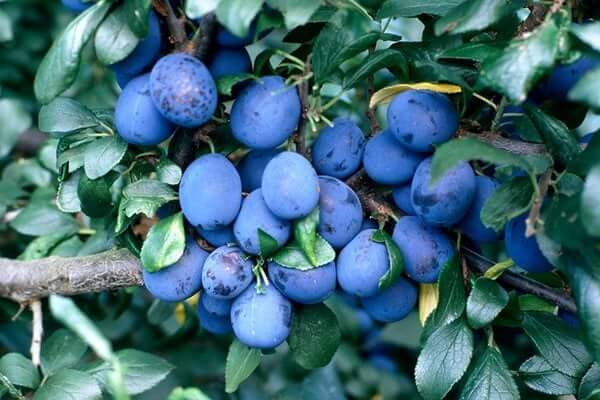
With their smooth, dark blue skin and tart flesh, damsons are a classic English fruit that sweetens as it ripens. Though often too sharp to eat raw, they shine in preserves, syrups, chutneys, and even gin. Once fully ripe, their flavor deepens into something truly irresistible.
6. Marble Berry
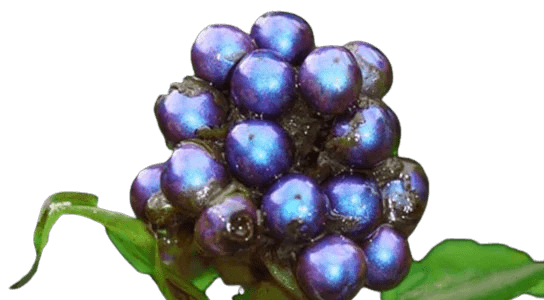
The marble berry is a rare African plant producing striking, metallic-blue fruits that seem to shimmer in the light. Though not eaten like most berries, their beauty is unmatched — each glossy, iridescent sphere looks like a tiny ornament, making them one of nature’s most dazzling blue treasures.
7. Blue Currant
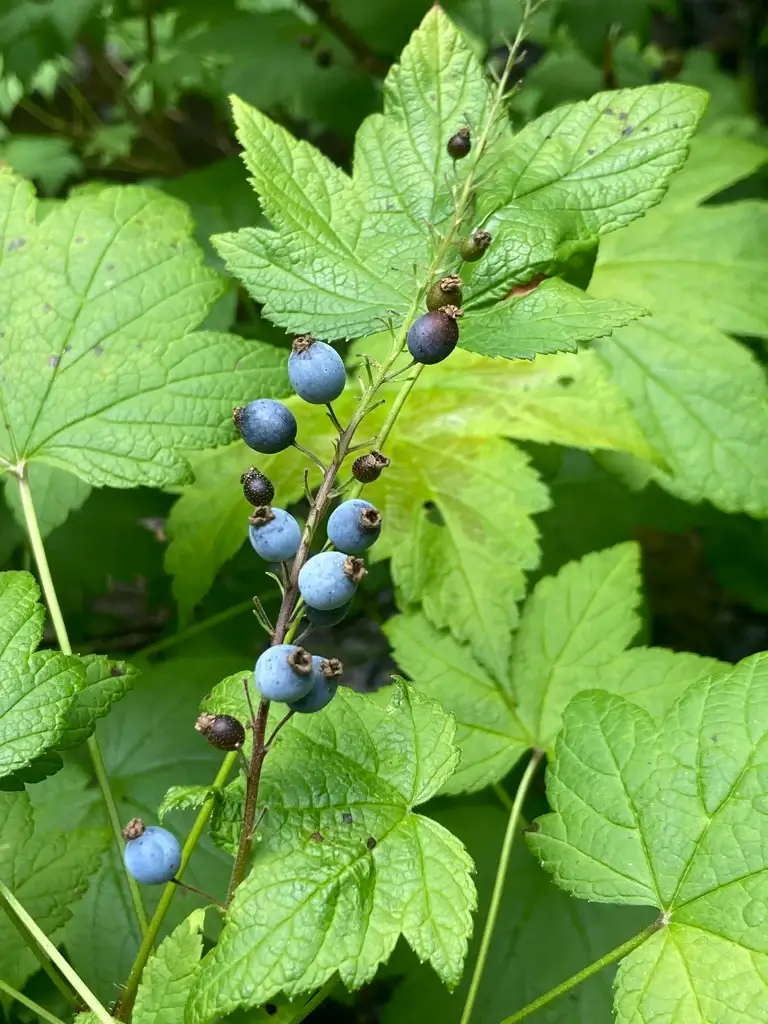
Bearing clusters of bluish-black berries with a powdery bloom, the blue currant thrives in shady, moist woodlands. Its tart fruits can be eaten fresh or used for jams and sauces, while its leafy backdrop adds beauty to gardens. The yellow glands on the berries give them a unique look.
8. Chokeberries
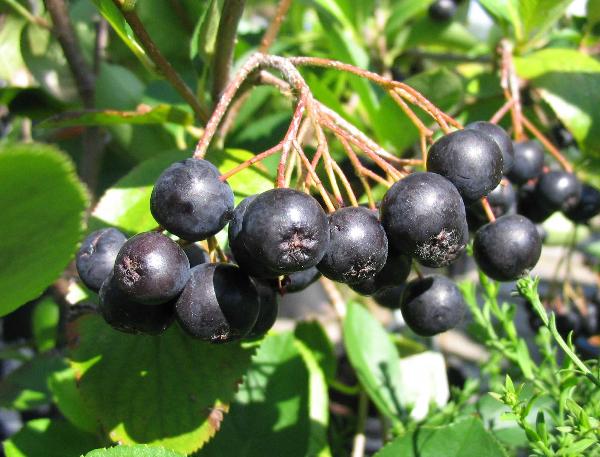
Dark blue to almost black, chokeberries (aronia) may be puckeringly tart when fresh but turn rich and flavorful once cooked. Low in calories yet high in fiber and vitamin C, they’re prized for juices, jams, and wines. In Eastern Europe, they’re a staple in both kitchens and gardens.
9. Porcelain Berries
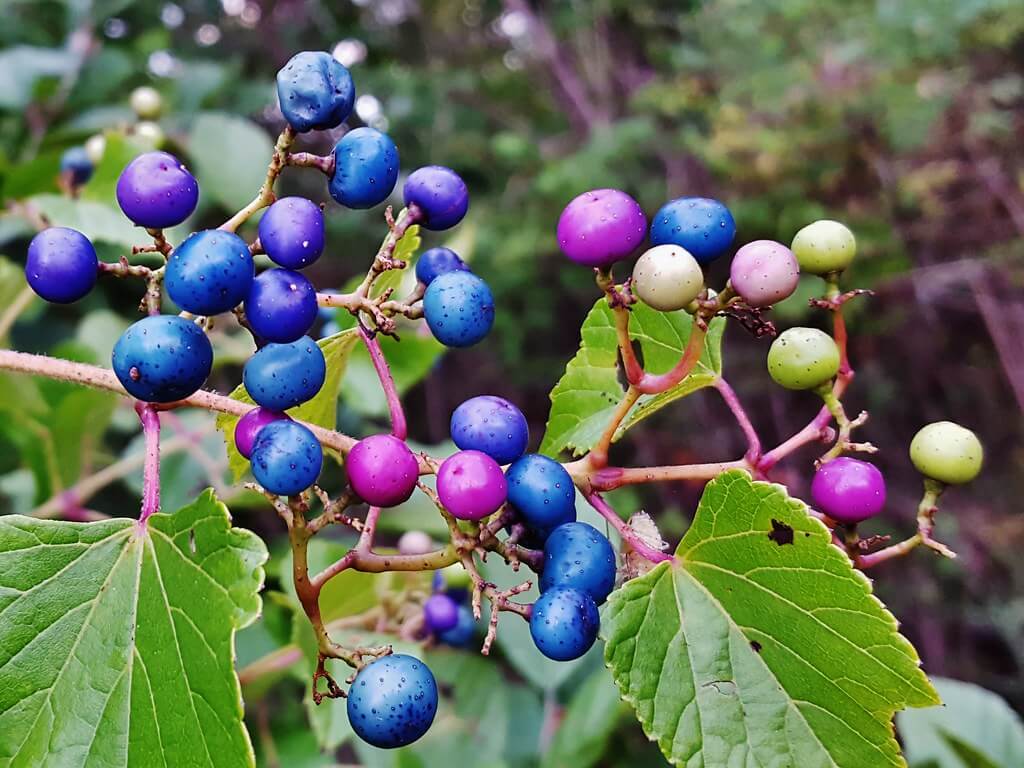
Porcelain berries ripen in a swirl of blue, turquoise, and purple shades, looking almost too pretty to eat. This climbing vine, related to grapes, produces clusters that add a splash of color to hedges and trellises. Though not widely consumed, they’re valued for their striking ornamental appeal.
10. Indian Hawthorn Berries
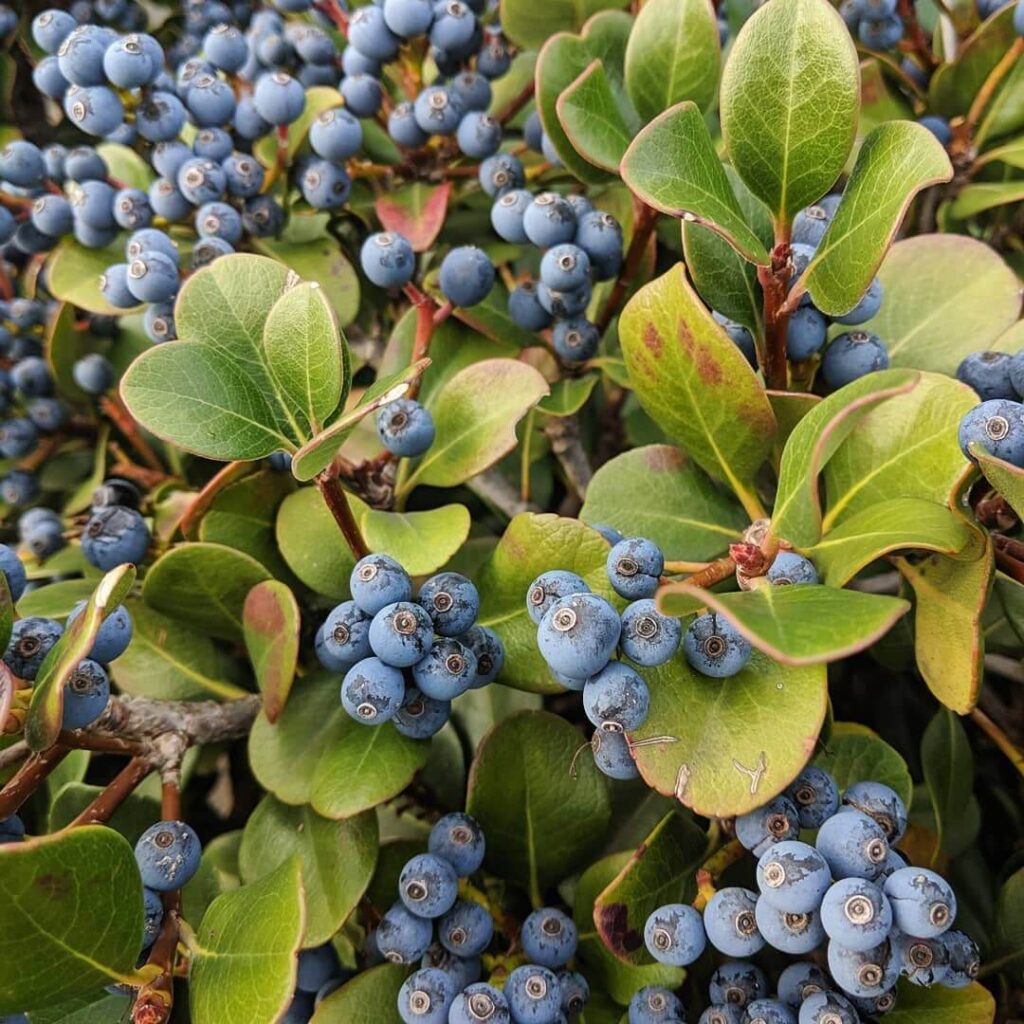
These small, deep blue berries grow on compact evergreen shrubs adorned with pink or white blooms. Often used as ornamental plants, Indian hawthorns brighten gardens year-round. The berries themselves are more admired for their appearance than taste, lending a pop of color to landscapes long after the flowers fade.
11. Oregon Grape
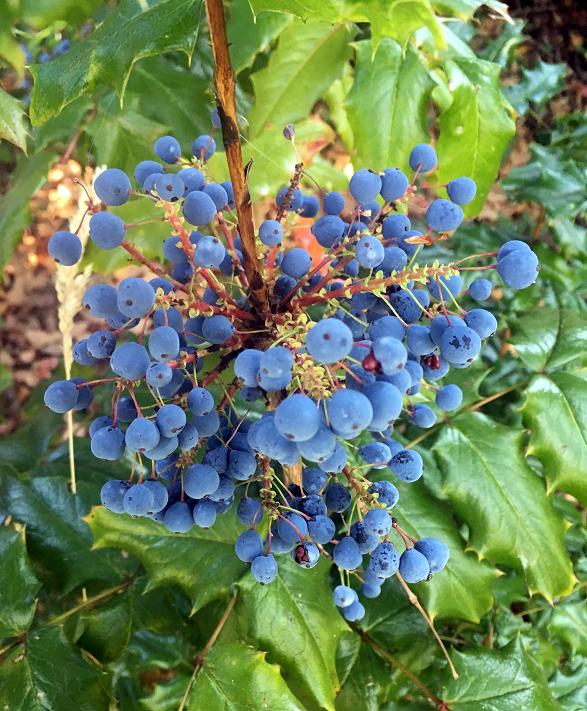
Despite its name, the Oregon grape isn’t a true grape. Its clusters of blackish-blue berries resemble tiny grapes and have a tart, almost bitter taste. Found widely across North America, the plant is also valued for its golden roots, used in traditional medicine.
12. Concord Grapes
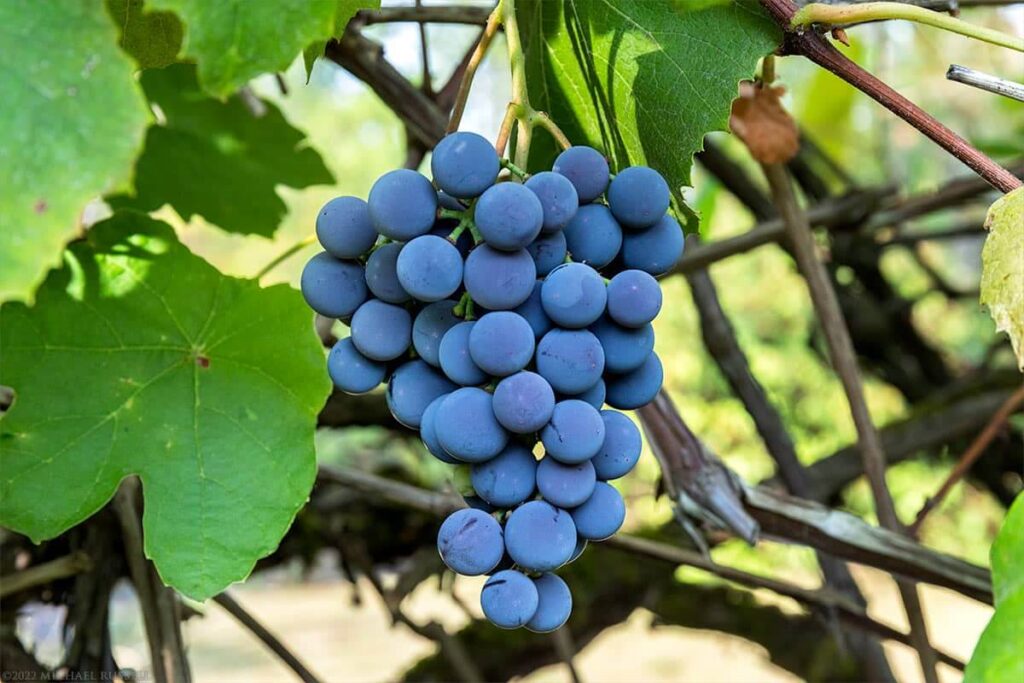
With their deep blue-purple skins and sweet, distinctive flavor, Concord grapes are an American classic. They shine in juices, jellies, pies, and candies. These juicy, aromatic grapes have been a staple in gardens for generations, loved as much for their beauty as for their kitchen versatility.
13. Ribier Grape

Large, round, and deep blue-black, Ribier grapes are sweet table grapes with tender flesh and slightly bitter skins. Originally from France, they ripen in mid-season and are perfect for fresh eating. Their rich color makes them as eye-catching on the vine as they are on the plate.
14. Sloe (Blackthorn)
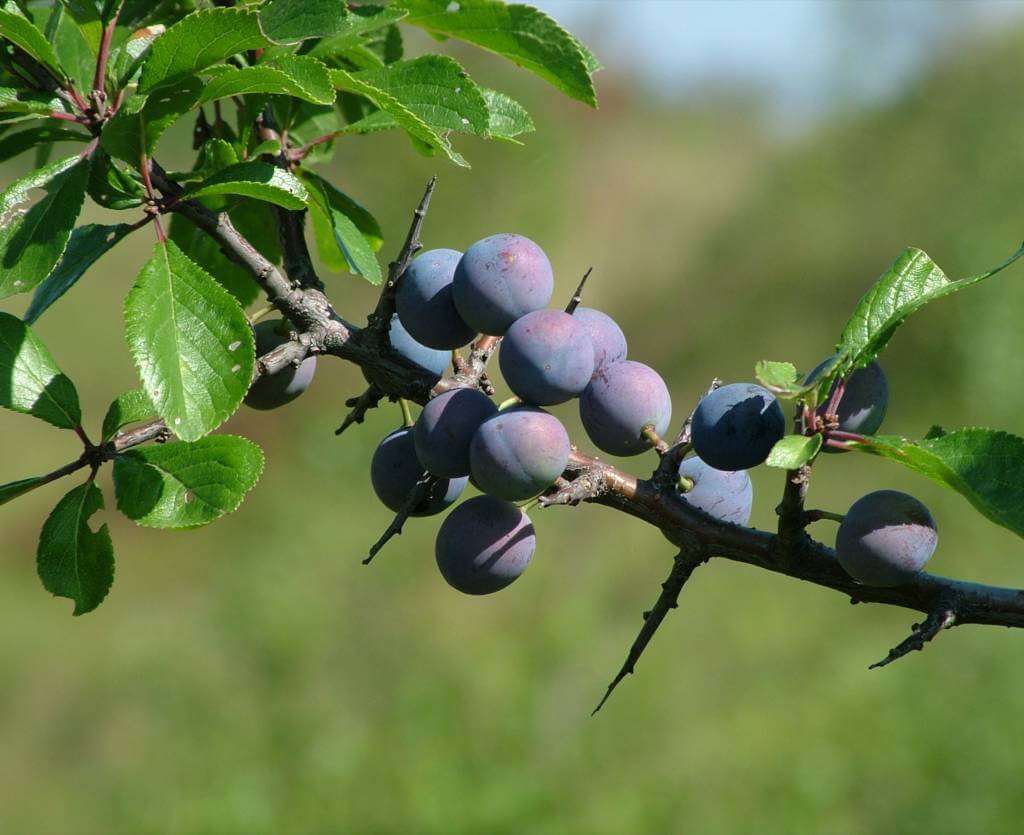
These small, round fruits ripen to a dark bluish-purple and pack a tart punch. Often too sour to eat raw, sloes are transformed into rich jams, syrups, and the famous sloe gin. Their glossy skins make them a striking sight in hedgerows each autumn.
15. Blue Olive
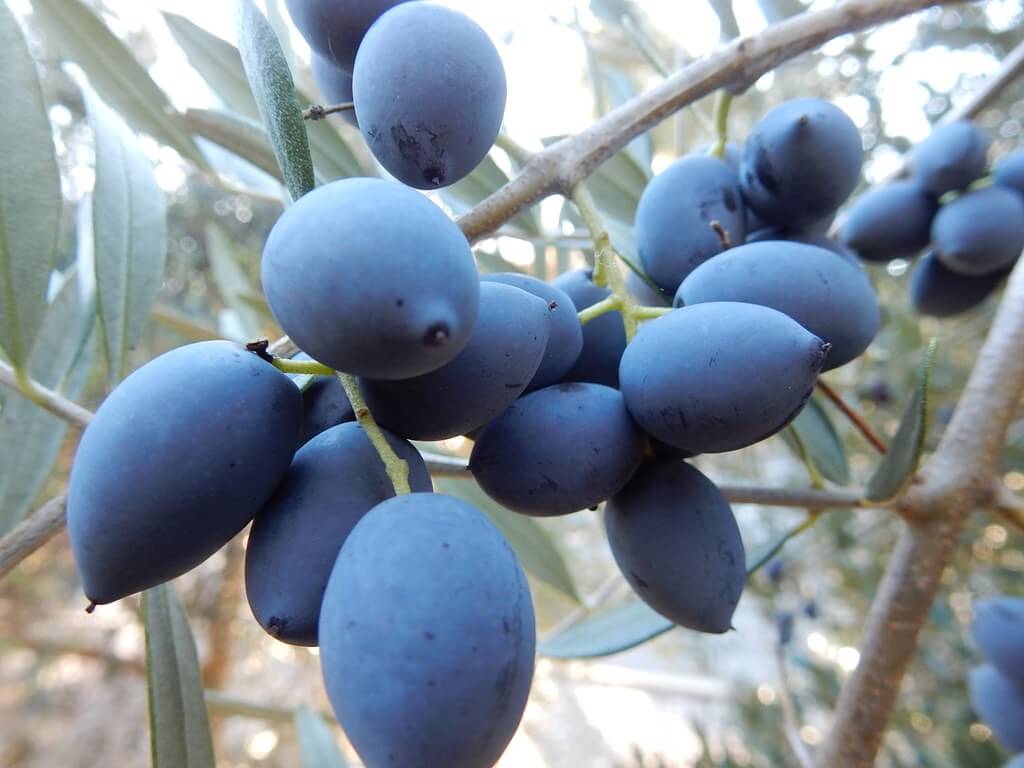
Native to Sri Lanka, blue olives are small, oval fruits with striking blue skins and tangy green flesh. Often pickled for a burst of flavor, they grow on medium-sized trees in the island’s wetter regions, adding a unique pop of color to tropical markets.
16. Italian Prunes
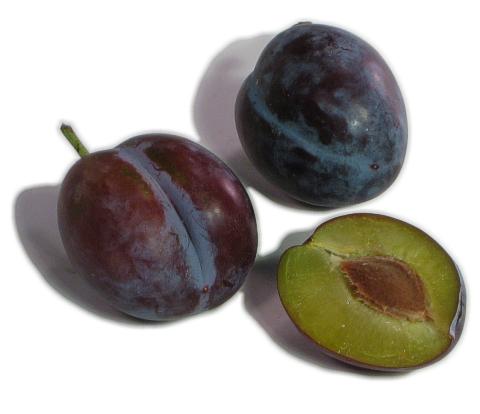
Oblong with smooth purplish-blue skin dusted in a pale bloom, Italian prunes have firm, sweet flesh that deepens in flavor as they ripen. Ideal for baking, drying, or eating fresh, they offer a rich, dessert-like taste that becomes even more vibrant when cooked.
17. Saskatoon Berries
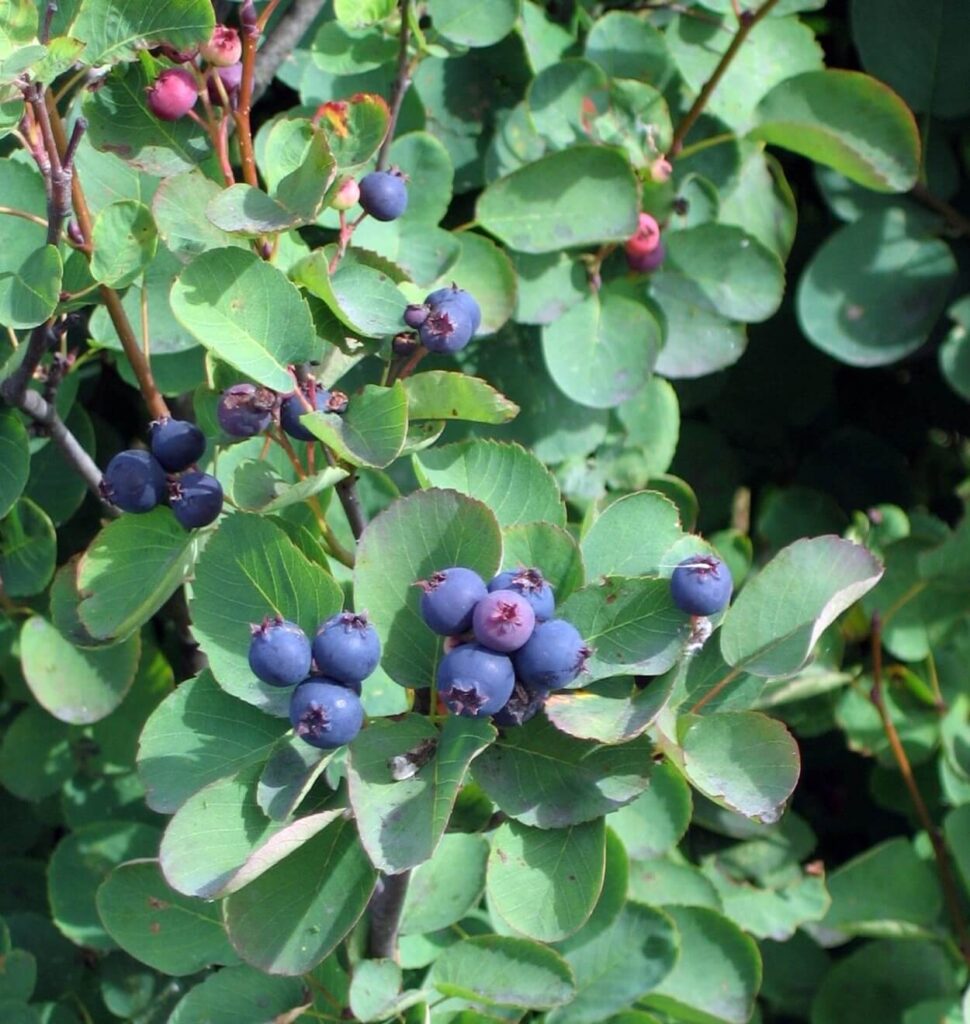
These dusky blue berries resemble blueberries but carry a subtle almond-like flavor. Rich in fiber, protein, and antioxidants, Saskatoon berries thrive in a wide range of climates and store well when frozen, making them a year-round treat for jams, pies, and snacks.
18. Laurestines
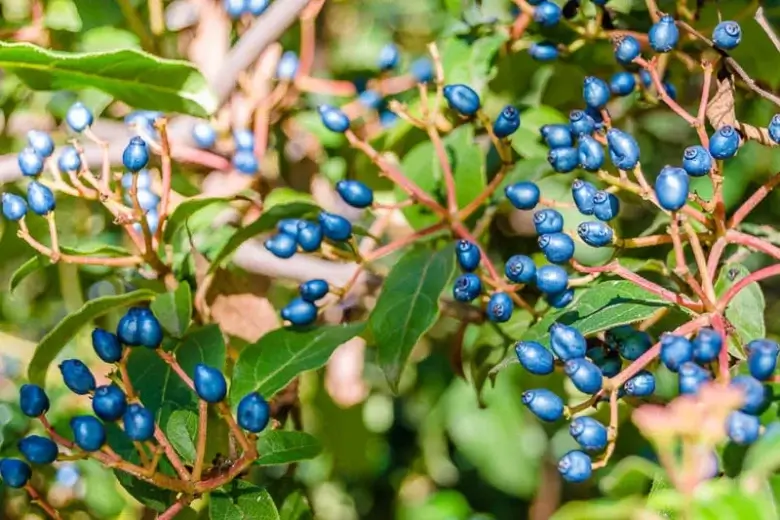
Glossy leaves and clusters of metallic blue-black berries make laurestines a favorite in ornamental gardens. While too bitter and potentially toxic for people, these winter berries provide essential food for birds, brightening landscapes when few other plants bear fruit.
19. Juniper Berries
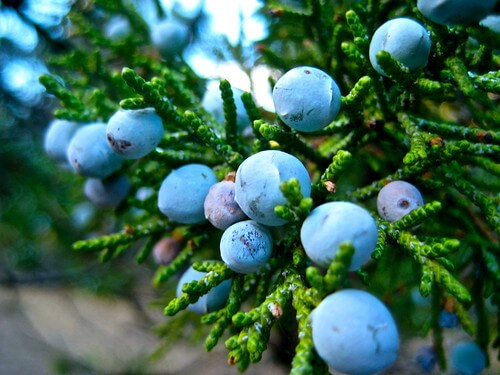
Juniper berries range from dusty blue to deep indigo and are best known for their piney, resinous flavor used in gin-making. Though not true berries, they’re also used in cooking and herbal remedies, lending an earthy, aromatic note to sauces, marinades, and teas.
20. Texas Blue Giant Fig
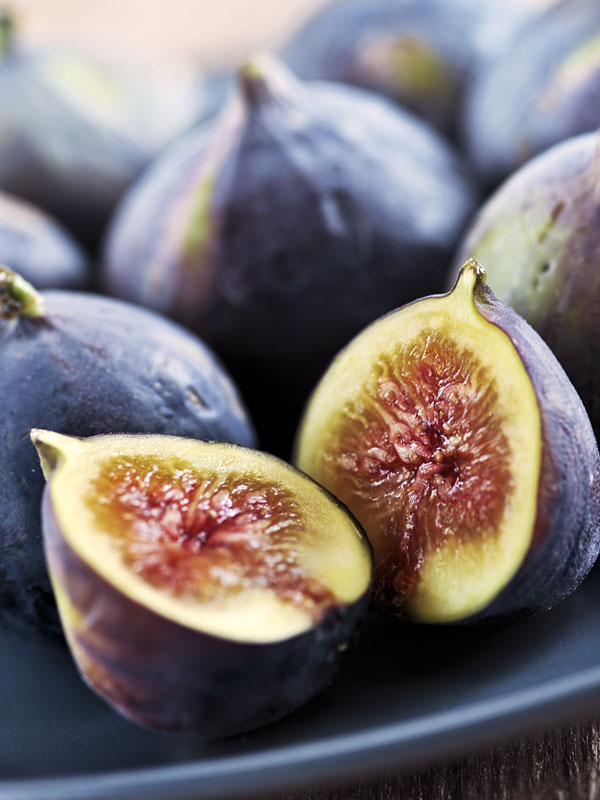
This fig variety lives up to its name, producing extra-large fruits with rich purple-blue skin and sweet amber flesh. The Texas Blue Giant yields multiple harvests each year, making it a favorite for fresh eating or decadent desserts.
21. Dead Man’s Fingers

Named for their eerie, finger-like shape, these pods ripen to an intense metallic blue. Inside, the soft, jelly-like flesh is sweet and edible. It is not well known outside Asia.
22. Grape Hyacinth
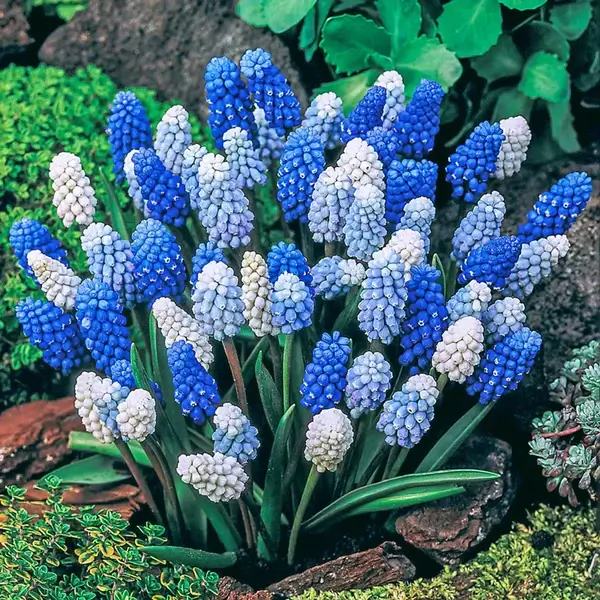
Grape hyacinths aren’t true grapes but spring-blooming bulbs that produce clusters of tiny, deep blue flowers resembling miniature grapes. Native to southeastern Europe, they brighten gardens with their vivid color and sweet scent, adding a splash of blue to mid-spring landscapes.
23. Blueberry Ash
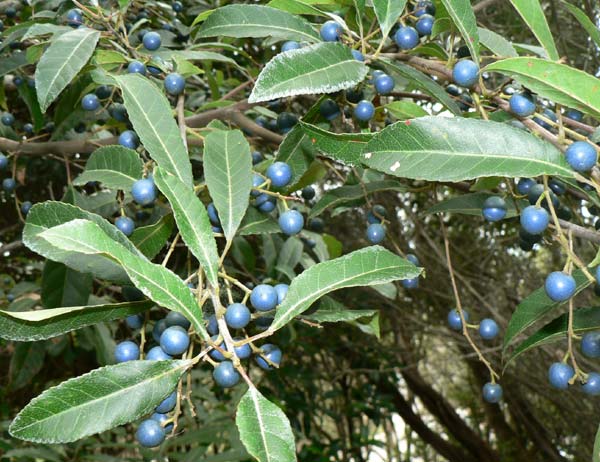
This Australian tree bears small, ovoid fruits that ripen to a rich purple-blue. Though the thin flesh is edible, they’re more admired for their ornamental value. Their striking berries and creamy white blossoms make blueberry ash a beautiful addition to warm-climate gardens.
24. Blue Java Banana
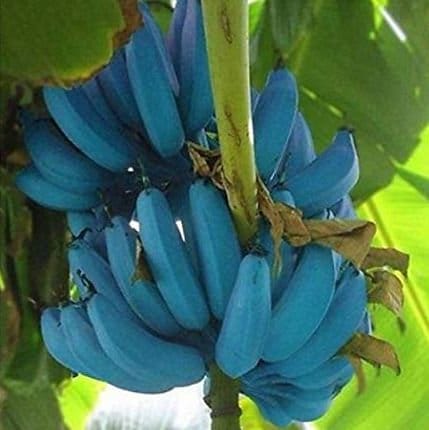
With a pale, silvery-blue peel, the Blue Java banana is as unusual in appearance as it is in taste. Nicknamed the “ice cream banana,” its soft, vanilla-flavored flesh is beloved fresh or frozen. Hardy and cold-tolerant, it’s a tropical treat with a frosty look.
25. Filus Blue Pepper

Starting deep bluish-purple before ripening to fiery red, these compact ornamental peppers are as colorful as they are spicy. Their early blue stage makes them a standout in edible landscaping, while their heat level — up to 58,000 Scoville units — packs a real punch.
26. Bosque Plum Blue Tomato
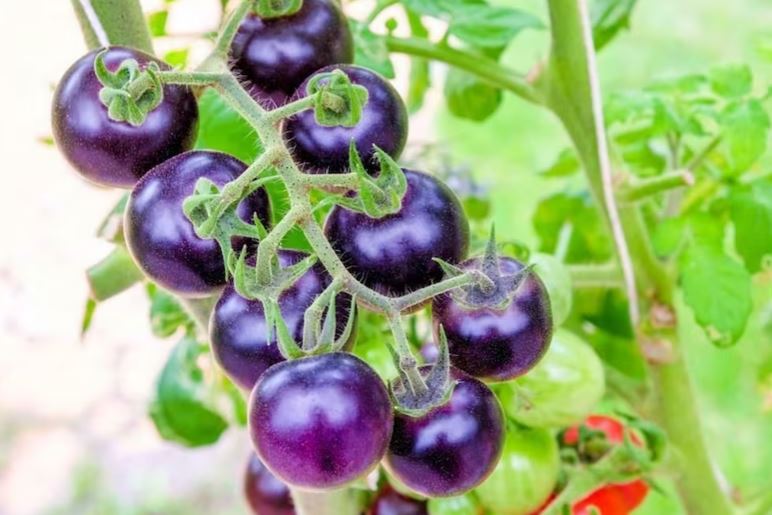
Small and round with golden undertones and a glowing blue skin, this tomato is rich in anthocyanins. As it ripens, the blue deepens into a plum-like purple. Sweet, tangy, and visually stunning, it’s a salad star and a conversation piece for any garden.
27. Blue Bead Lily
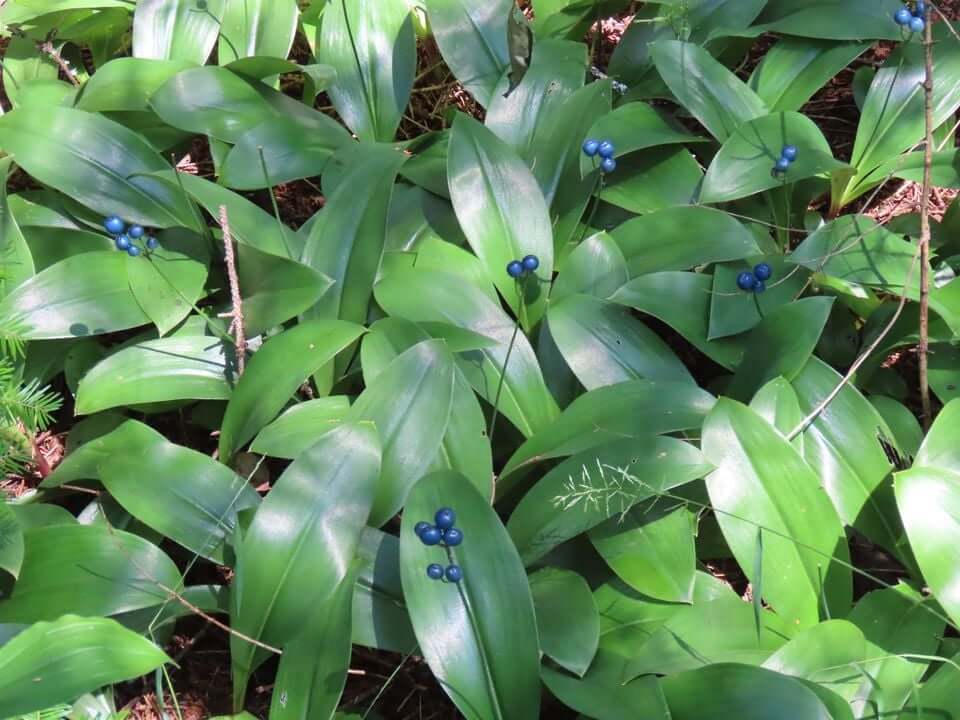
Named for its glossy, porcelain-blue berries, the blue bead lily thrives in cool, shaded forests. The berries appear in mid to late summer, adding a jewel-like touch to the woodland floor. Though not edible for humans, they’re an iconic part of northern forest scenery.
28. Blue Flax Lily
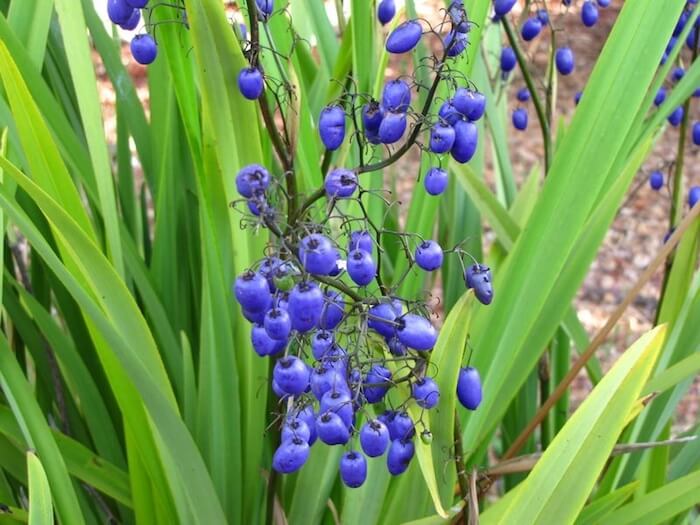
This Australian native forms clumps of slender leaves topped with vivid blue berries. Edible in small amounts, they add an unexpected burst of color to dry gardens. Hardy and adaptable, the plant is as valued for its ornamental appeal as for its fruit.
29. Lycianthes acapulcensis
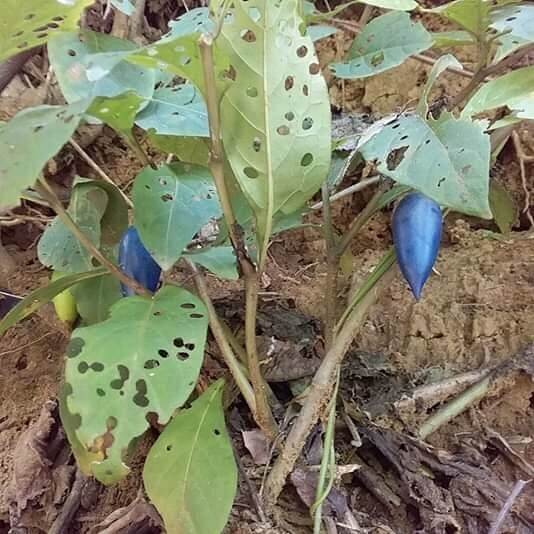
Bearing small blue to purple fruits, this member of the nightshade family grows across Mexico and Central America. It’s a resilient plant often found in protected areas, valued more for its botanical interest and vivid fruit color than for culinary uses.
30. Persicaria perfoliata

Known as mile-a-minute vine, this fast-growing plant produces clusters of metallic blue fruits. Each segment contains a glossy seed, making the berries as decorative as they are distinctive. While the plant can be invasive, its fruit adds a striking pop of color.
31. Blue-Fruited Dogwood
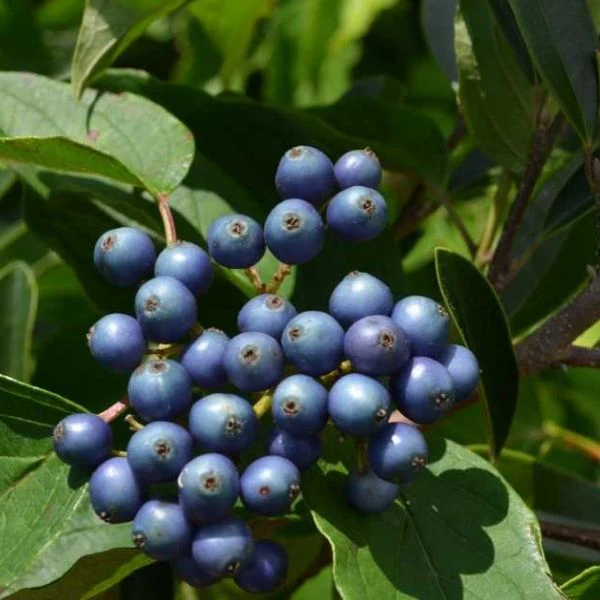
Native to eastern North America, this dogwood species offers year-round appeal, with white blossoms in spring, lush foliage in summer, and its namesake blue fruit in late season.
32. Solomon’s Seal

Solomon’s seal has elegant, arching stems that grow small, dark blue to black berries in late summer. Wildlife enjoys the fruit, but it is not safe for people to eat. This plant is loved for its graceful leaves and woodland beauty, both in gardens and in the wild.
